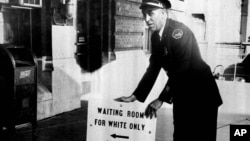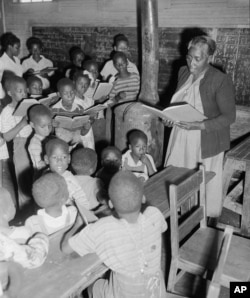On May 17, 1954, 63 years ago today, the social construct of the United States forever changed when the U.S. Supreme Court delivered its ruling in the case of Brown versus the Board of Education.
“…we unanimously hold that separate but equal has no place in the U.S. Constitution.”
Then chief Justice Earl Warren said that was a violation of the 14th Amendment.
And with that, lawful segregation of the public education system in America was over — and the civil rights era began in earnest.
Linda Brown
Before that day, state education was governed by the “separate but equal” principle, which allowed states to bar black children from attending white schools.
Schools for black children were far below the average public schools for whites, without basic resources such as up to date textbooks and bathroom facilities.
A few years before, the parents of nine-year-old Linda Brown, who traveled an hour to get her to an all black school in Topeka, Kansas, tried to register their daughter in a much closer nearby white school.
The principal refused.
Brown’s parents turned to the National Association of the Advancement of Colored People (NAACP), which recruited 12 other African-American children for a class-action suit against the Topeka school board. Several other states joined the suit, argued at the Supreme Court by the NAACP’s Thurgood Marshall.
Civil rights movement
Despite the landmark court ruling, some states — particularly in the southern U.S. — balked, refusing to comply. The resistance energized civil rights activists, who ramped up their movement to improve equality for black Americans.
Three years after the High Court ruling, nine black students enrolled in the all-white Little Rock Central High School in Arkansas.
In September, the governor brought out the National Guard to prevent the students from attending classes.
Then President Dwight Eisenhower sent in federal troops, announcing his decision to protect the Brown ruling in a televised address to the nation.
Under federal escort, the so-called "Little Rock nine" finally made it inside Little Rock High on September 25, 1957, for their first day of school.
The soldiers remained to protect the black students for the entire school year.
By 1961, only three southern states — South Carolina, Alabama and Mississippi — maintained a completely segregated school system.
Of the three, South Carolina resisted until a court case filed by the parents of black students finally forced the state to desegregate in 1963.









